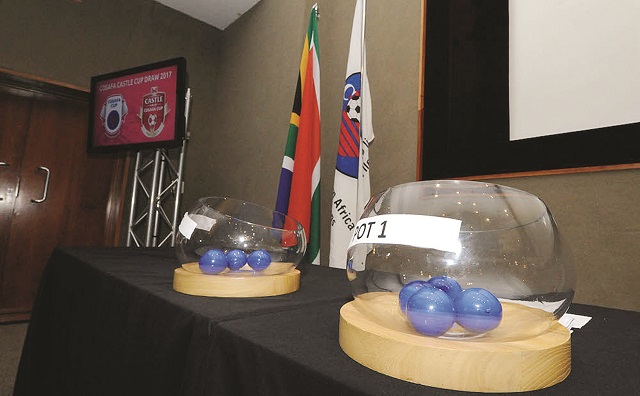Trademarks, trade secrets and copyrights for SMEs
Aleck Ncube
TRADEMARKS are distinctive signs indicating the source of a product or service. They include, for example names, logos and colours applied to the owner’s products or services, which distinguish them from products and services provided by competitors. A trademark is a sign, which is capable of being represented graphically and distinguishes goods and services as coming from a particular business or company.
Trademarks serve to indicate the commercial source or origin of the products and services to which they relate. The many different types of trademarks include word marks, figurative marks and colour and shape marks. A brand is a collection of perceptions and expectations in the mind of consumers, which is established through consistent marketing, public relations efforts and money. A brand typically consists of a name, identifying mark, subsidiary marks, logo, slogan, images, colours, symbols, mental concepts, vision.
Trademarks or signs must be distinctive. A lack of distinctive character is therefore an absolute ground for refusal of registration.
Trademarks, which are descriptive or generic, are not capable of fulfilling the origin function. Other absolute grounds for refusal include signs that are contrary to public policy and the principles of morality. Relative grounds for refusal exist where the peaceful co-existence of two marks is not possible because of the likelihood of confusion on the part of the consumer.
Trademarks must be registered in order to obtain trade mark protection. It is essential to be the first to register. Registration is possible at national level at ZIPO. It is also possible to file an international application with WIPO using the Madrid Protocol. In Zimbabwe, applicants have the option of filing with ARIPO with a view to obtaining a Community Trademark, which affords protection in the whole of the ARIPO region under the Banjul Protocol on Marks. Trademark owners have an exclusive right to prevent others from using their mark in the course of trade.
Trademarks are registered for specific goods and services only. The exclusive right offered by the trade mark is linked to these specific goods and services. This is the principle of speciality. A second limit is the principle of territoriality. Trademark protection is limited to the territory where the mark is registered. Unlike other IP rights, trademarks can be renewed indefinitely. Each renewal adds 10 years of protection. There are a number of different ways in which trademark protection can end. For example, during the first five years after registration there is no obligation to use the mark. After this initial period, lack of genuine use can lead to cancellation of the mark. Also, a trademark can still be declared invalid if, after registration, an absolute ground for refusal is identified or where peaceful co-existence on the market is no longer possible.
The writer has observed the following common mistakes made by SMEs. Putting a lot of emphasis on trademarks, ignoring creating lasting brands. Failing to register their trademarks, wasting time and money, registering worthless trademarks, as well as filing trademark applications that have no chance of being approved by the IP Office(s). A strong brand will engender feelings of trust, loyalty and recognition in the customer’s mind resulting in market success and increase the value of the company. In most businesses the brand, and the trademark, are one of the most valuable assets. Branding is an expensive exercise that takes time. But, once consumers ask for your product by name, a business is set to capitalise for years to come.
Trade Secrets
Trade secrets are an alternative to patents. They cover information not known to the public. If the possessor of the information is careful to keep it confidential, he can sue anyone who steals it. To become a trade secret, information must not be generally known or easily discoverable. At the same time, it must have a business, commercial or economic value from the fact that it is secret. It must also be possible to demonstrate that reasonable efforts have been or are being made to maintain the secrecy of the information. Trade secrets are valid for as long as they remain secret, in other words for as long as they do not fall into the public domain. Trade secrets can be just about anything that can be kept secret and that confers a commercial advantage. One example of a trade secret is the formula for Coca-Cola, which is kept locked away in a vault at the Coca-Cola headquarters.
The protection of trade secrets involves both practical arrangements to restrict access to knowledge, and legal or contractual arrangements to ensure that those who have access to the secret or confidential information do not divulge it. In many countries, employment agreements can include a restriction stipulating that key employees may not go and work for a competitor, and most employees have a so-called “fiduciary” duty to their former employers to not reveal confidential information. Non-disclosure agreements help keep information exchanged with customers or potential partners confidential. They are only effective if the other side keeps the information secret. A better way to protect information is to restrict access to those employees with a need to know the information. More generally, data can be encrypted (in particular if it is sent over the internet) and entry into certain areas of a manufacturing plant controlled.
Copyrights
Copyright protects any production of the human mind, provided that this production is an expression, and not a mere idea, process or discovery. The expression must be original. Examples of copyright-protected work in the artistic, literary and scientific fields include literary, dramatic, musical, artistic and photographic works, scientific articles and computer programs and databases. Copyright creates a special legal relationship between authors and their work. The author is the physical person who created the work.
The period for which legal protection is conferred is called the “term”. International treaties and conventions have laid down a term of a minimum of 50 years after the author’s death. This means that the author enjoys copyright protection throughout the whole of his life.
Copyright does not need to be registered. It automatically exists when a work is created. It protects any type of original, creative expression, including literature, art, drama, music, photographs, recordings and broadcasts. Copyright confers both economic and moral rights on the owner.
The economic exploitation rights include the rights of reproduction, communication to the public, translation, adaptation, distribution and resale. The moral rights include the rights of authorship, integrity and divulgation.
These rights are limited in that third parties are allowed to use the protected work in certain situations and for certain purposes. These exceptions and limitations are in the public interest. Copyright infringement occurs if the protected work is used without the consent of the author or right-holder.
The Copyright Value Chain involves the following steps: the creation stage which requires human capital involving talent, capacity building/training as well as investment in the required initial tangible capital. The second stage is the packaging of the product, a process which involves investment in the necessary equipment as well as the engagement of other expertise. The third stage is the consumption process that involves collective or individual management of rights (revenue to the creator/copyright owner) as well as the distribution channels.
Copyright Industries are industries that produce tangible and intangible creative works. They produce knowledge and products that have cultural and social meaning of which their exploitation has potential to generate wealth. Terms such as Cultural Industries, Copyright-based Industries, Copyright Industries and Creative Industries are used interchangeably. Core Copyright Industries are wholly engaged in the creation, production, manufacturing, distribution, broadcasting, performance of copyright protected works. They include, book publishing, music, theatre, computer software, audio-visual works, broadcasting etc. Copyright Interdependent industries produce or manufacture products that are consumed with those in the core industries or those that deal with facilitating equipment.
They include the manufacture and distribution of televisions, radio, CD recorders, computers, musical instruments, photocopying machines, etc. Partial Copyright Industries are a small part of the production output is linked to copyright and related rights, Examples: Architecture, furniture, restaurants etc. Non-dedicated Support Industries that remotely depend on copyright protected works but these works contribute a part of their business, examples are telephones, transportation, internet etc.
Copyright Industries contribute to the economy and economic importance of copyright industries in countries which are major creators of copyright material has been well documented. All studies carried out so far show a considerable contribution of the industries to the national wealth. Copyright industries rank in size with other major conventionally defined industries in those countries. They represent the fastest growing sector in some countries for example “Nollywood” the Nigerian movie industry. They create considerable employment, contribute to increasing levels of exports and imports as well as increase in national GDP.
In Kenya the copyright industry contributes about 6 percent to the GDP while contributing 3.5 percent of employment in the country.
Closer to home, in South Africa the copyright industries contribute about five percent of the GDP in the process contributing five percent of employment in that country.
In order for SMEs to benefit from their ownership of copyright works, they need to be aware of legal requirements to acquire copyright protection e.g. Does the law require fixation of the work on a tangible medium. Options for exploiting copyright protected works include the SMEs dealing and using its own copyright protected works, the SMEs can license their works and lastly the SMEs can assignment their copyright works. The SME needs to police and enforce its copyright.
There are opportunities for SMEs in Zimbabwe that are involved in the copyright industries. Creation of copyright works does not always require academic training. Creation of some works merely requires talent and the protection of copyright is free of charge. There is a growing recognition of the contribution of SMEs to economic development, growth and diversification.
There is an increase in the use of culture and traditional cultural expressions that has seen a rise in acceptance and consumption of cultural products, cultural tourism etc. Lack of knowledge about copyright and related rights can serve as a hindrance to the attainment of the potential benefit that SMEs can derive from their own copyright protected works, and from the use of others’ works. Creative works have potential to contribute towards economic development and growth. The proper administration of the copyright value chain eventually leads to economic diversification, job creation, poverty alleviation, education (knowledge creation, sharing and transfer), tax revenue, attraction of Foreign Direct Investment (FDI) as well as further investment into creativity resulting in the realisation of economic benefits of cultural industries.
In the next article, I will tackle the development of an Intellectual Property Asset Management Strategy by Enterprises and SME’s.
Aleck Ncube is an Intellectual Property Scholar. He can be contacted on [email protected] or Follow me on Twitter: @aleckncube








Comments